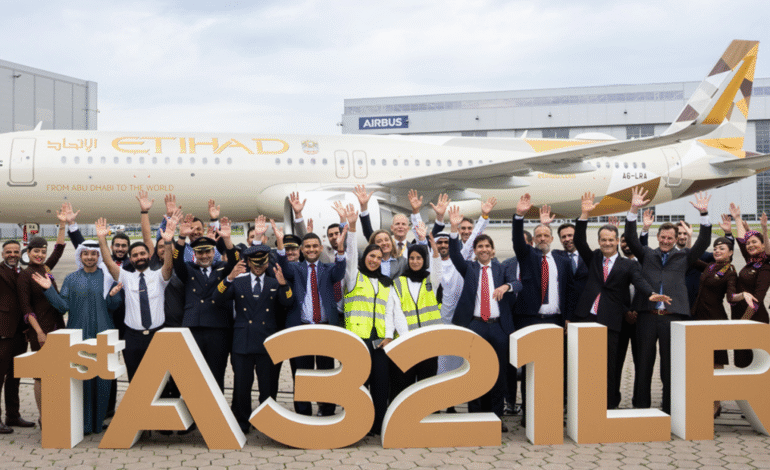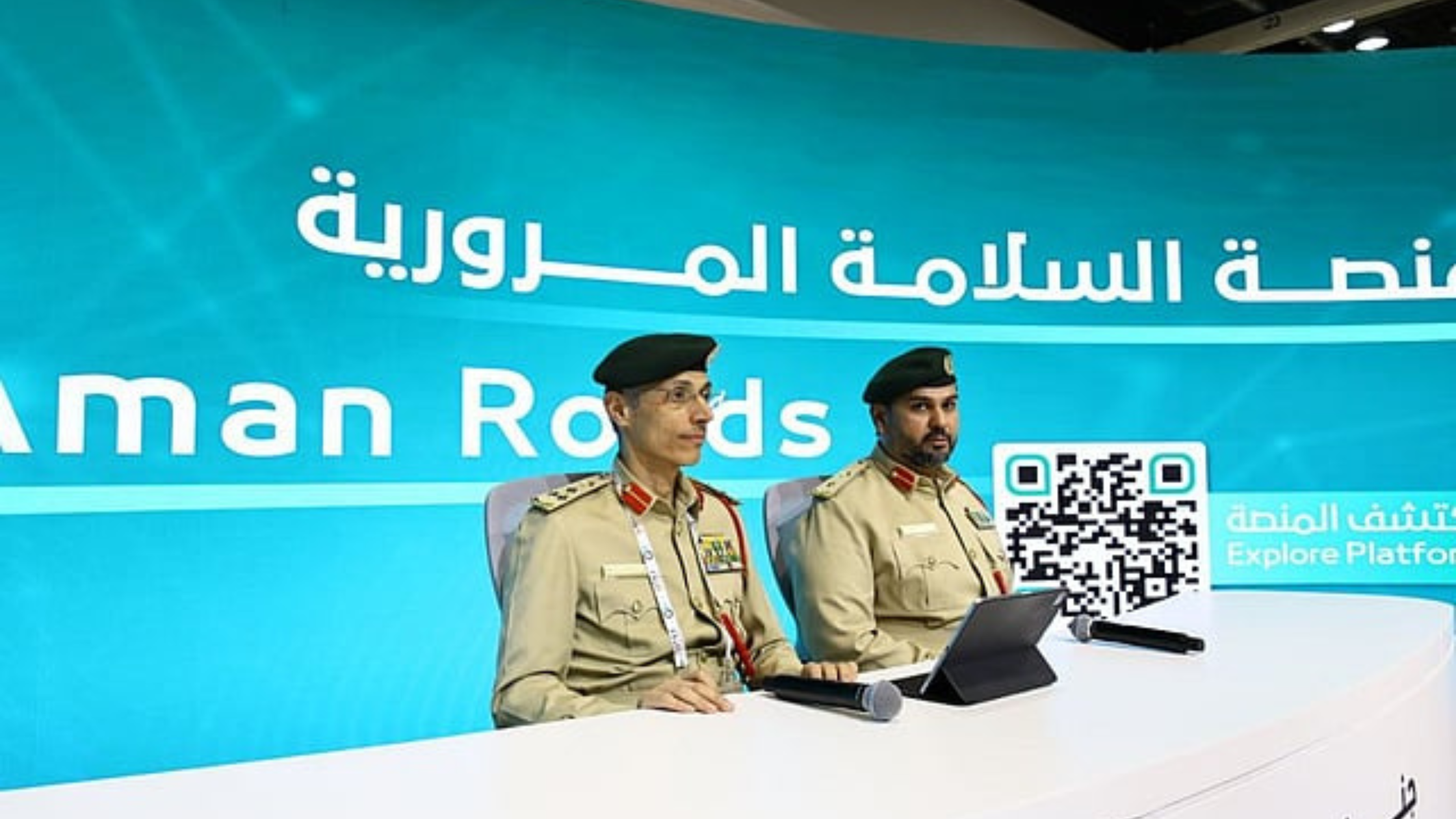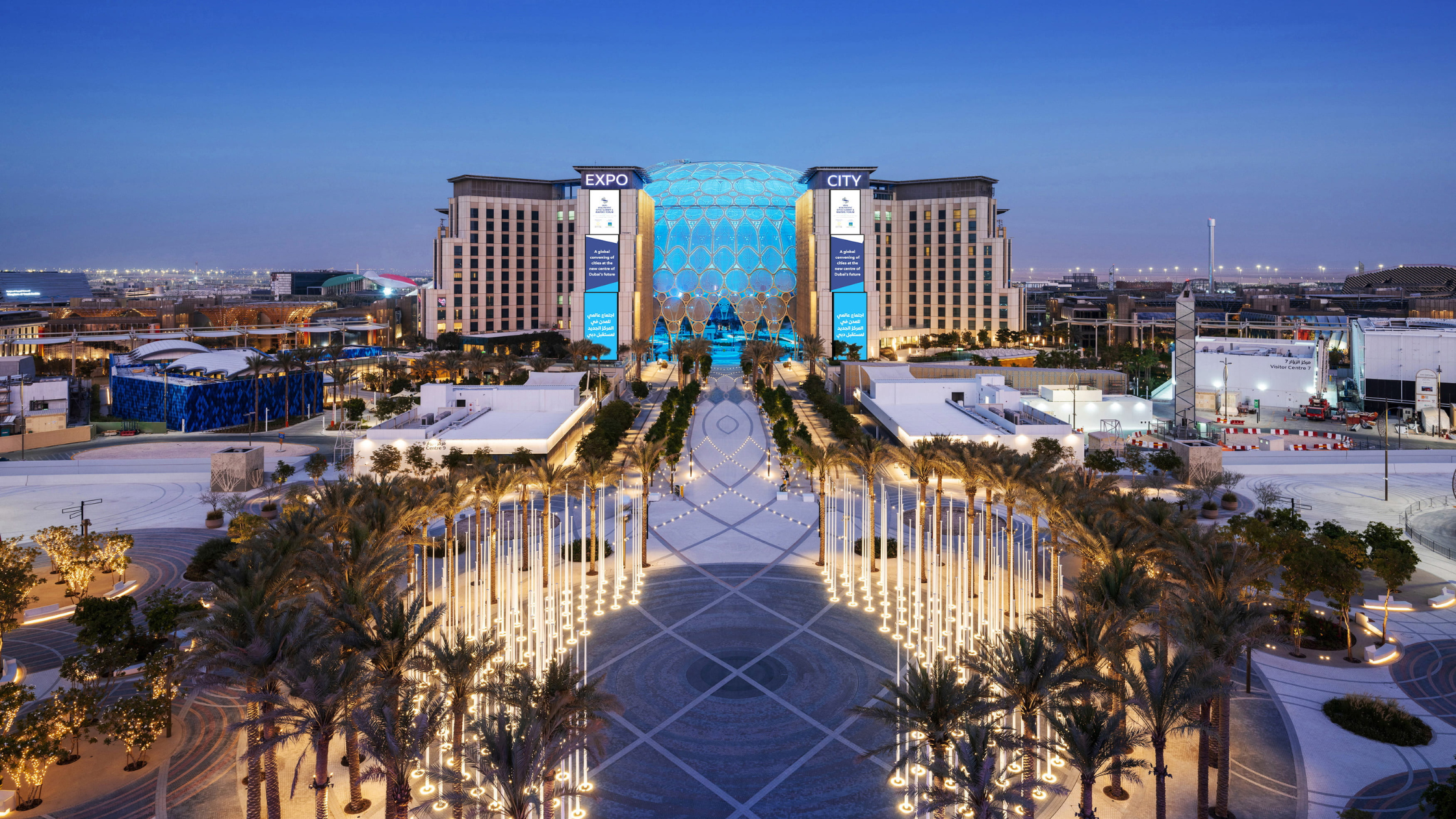Etihad’s First Airbus A321LR Boosts UAE Expansion Strategy

Etihad Airways, the national carrier of the United Arab Emirates, has officially received its first Airbus A321LR, a long-range version of the popular A321neo aircraft. This milestone delivery took place at Airbus’s facility in Hamburg, Germany, and is a significant step forward in the airline’s ambitious expansion strategy. The new aircraft is scheduled to enter commercial service on August 1, 2025, beginning with its inaugural flight to Phuket, Thailand. The A321LR is expected to play a pivotal role in Etihad’s goal of carrying 38 million passengers annually by 2030.
Etihad’s decision to introduce the A321LR aligns with its broader fleet optimization efforts and commitment to improving the passenger experience across medium- and long-haul routes. The A321LR’s advanced range capabilities and fuel efficiency make it an ideal addition for expanding Etihad’s reach into secondary markets while maintaining a premium onboard experience.
First Commercial Route and Broader Connectivity Goals
The first deployment of the Airbus A321LR will be on the Abu Dhabi to Phuket route, beginning operations on the 1st of August 2025. This route selection is not random it reflects Etihad’s strategic intent to tap into high-demand leisure travel markets in Southeast Asia. Phuket, being a world-renowned destination for luxury vacations, offers a fitting debut for an aircraft that is designed to deliver both efficiency and elegance.
Following its initial flights to Phuket, the A321LR will be introduced on additional routes connecting Abu Dhabi to a wide range of global destinations. These destinations include Algiers, Bangkok, Chiang Mai, Copenhagen, Düsseldorf, Kolkata, Krabi, Krakow, Medan, Milan, Paris, Phnom Penh, Tunis, and Zurich. These cities have been chosen to enhance Etihad’s presence in both established and emerging travel corridors across Asia, Europe, and North Africa.
By deploying the A321LR on these routes, Etihad is not just increasing its flight frequency or geographical footprint it is actively realigning its network to cater to evolving travel patterns. The aircraft’s extended range and economic performance allow the airline to operate profitably in markets that may not sustain widebody aircraft yet demand premium service.
Revolutionizing Passenger Experience in Narrowbody Aircraft
Etihad has used this aircraft delivery to redefine what passengers can expect from narrowbody flights. The new A321LR has been configured with three cabin classes First, Business, and Economy each designed with advanced technology, comfort, and convenience in mind. This approach mirrors the experience typically reserved for widebody aircraft used on long-haul journeys.
The First Class section of the A321LR includes 14 suites that provide fully flat beds, complete privacy with sliding doors, and space for a companion to sit and dine. These suites are window-facing, allowing natural light and scenic views while flying. Each suite is equipped with a 20-inch 4K entertainment screen, Bluetooth headphone pairing, wireless charging capabilities, and premium materials. The decision to install such a high level of luxury in a single-aisle aircraft showcases Etihad’s determination to elevate short- and medium-haul travel experiences.
Business Class has also been designed to impress, featuring a 1-1 herringbone layout that ensures all passengers have direct aisle access and window views. With 17.3-inch 4K touchscreens, wireless charging ports, and Bluetooth connectivity, business travelers can remain productive and entertained throughout their journey. The layout offers both privacy and ease of movement, appealing to professionals and frequent flyers who prioritize comfort and efficiency.
Economy Class includes 144 seats, each fitted with 13.3-inch 4K touchscreen displays. These screens support Bluetooth audio and offer USB charging, a significant step up from traditional economy offerings on narrowbody aircraft. Travelers will benefit from enhanced in-flight entertainment, power access, and an upgraded seating experience. Additionally, the aircraft features enlarged overhead storage bins that allow for more carry-on baggage, easing passenger concerns about limited space and improving the boarding process.
Etihad’s Multi-Route Expansion Strategy
With the delivery of its first A321LR, Etihad Airways is implementing one of its most aggressive network expansion plans to date. The airline has announced or launched 27 new routes within a single calendar year, signaling its confidence in international travel recovery and future growth. The introduction of the A321LR supports this expansion by enabling efficient connectivity between Abu Dhabi and high-demand markets without compromising service quality.
Among the upcoming destinations being served by the A321LR are cities with diverse travel profiles. Cities like Paris, Milan, and Zurich represent established business and leisure markets in Europe, while destinations like Krabi, Chiang Mai, and Medan offer access to emerging tourism hubs in Southeast Asia. Tunis, Algiers, and Kolkata further strengthen the airline’s reach into North Africa and South Asia, two regions with growing demand for both inbound and outbound travel.
This route diversification ensures that Etihad maintains a strong presence in high-performing sectors while also cultivating new markets. The flexibility of the A321LR allows the airline to test and refine its presence in secondary cities, enabling it to adjust schedules and capacity with greater responsiveness compared to larger widebody jets. This agility is essential as the airline positions itself to compete not only with Gulf giants like Emirates and Qatar Airways but also with regional carriers across Asia and Europe.
Strategic Importance of the Airbus A321LR for Etihad
The Airbus A321LR is not just another aircraft in Etihad’s fleet; it is a cornerstone of the airline’s 2030 vision. The decision to invest in this aircraft model demonstrates Etihad’s understanding of the shifting dynamics of global aviation. Travel preferences are evolving, with travelers demanding more personalized and comfortable experiences even on short and medium-haul journeys. Simultaneously, airlines are under pressure to maintain profitability in a highly competitive and fuel-sensitive market.
The A321LR, with its advanced aerodynamics, fuel-efficient engines, and extended range capabilities, is ideally suited to help Etihad meet these challenges. Its operating economics make it perfect for connecting city pairs that were previously considered too costly or logistically complex. This enables Etihad to broaden its network while controlling costs and emissions.
Furthermore, the addition of nine more A321LR aircraft throughout 2025 underscores the airline’s commitment to long-term scalability. By progressively phasing these jets into service, Etihad is not only future-proofing its fleet but also ensuring that it can maintain high service standards across a growing range of routes.
Passenger-Centric Design Philosophy
Etihad’s approach to outfitting the A321LR speaks volumes about its passenger-first philosophy. Each cabin has been designed not simply as a seating class, but as a branded experience. The First Class suites, for instance, cater to travelers who expect privacy and exclusivity, typically associated with private jet or first-class international service. Business Class offers the right mix of function and comfort, while Economy ensures affordability without sacrificing convenience.
What sets the A321LR apart from traditional narrowbody jets is the attention to detail in its interior design. The choice of materials, lighting schemes, and seating ergonomics has been influenced by passenger feedback and global design trends. Etihad has ensured that despite the reduced cabin width of a single-aisle jet, travelers experience no sense of compromise. This focus on customer satisfaction is likely to win loyalty in a market where small details often determine long-term brand affinity.
The implementation of wireless technologies throughout the cabin further enhances the onboard experience. Passengers can now charge their devices without cables, connect Bluetooth headphones directly to the entertainment system, and control their in-flight entertainment with intuitive interfaces. These features mirror the seamlessness travelers are accustomed to in their personal devices, making their journey more comfortable and familiar.
Aligning Growth with Sustainability and Innovation
Etihad Airways has been actively involved in redefining sustainability benchmarks in aviation, and the A321LR fits neatly into this narrative. The aircraft is known for its lower fuel consumption and reduced carbon emissions, making it an environmentally sound choice for medium-haul flights. By adding this aircraft to its fleet, Etihad is not only boosting its route network but also taking a significant step towards achieving its sustainability targets.
The A321LR’s efficient engine performance and aerodynamic enhancements result in a reduced environmental footprint per passenger kilometer, which is particularly relevant in today’s environmentally conscious travel climate. Etihad’s investment in this aircraft illustrates its belief that innovation and sustainability can go hand-in-hand, enhancing the brand’s reputation among eco-conscious travelers and industry partners.
Moreover, the flexibility and reduced turnaround time of the A321LR allow the airline to maximize aircraft utilization, reducing idle time and improving operational efficiency. This translates into better financial performance while still providing passengers with more flight options, shorter layovers, and on-time service.
A Strategic Milestone for UAE Aviation
The arrival of the first Airbus A321LR marks a defining moment in Etihad Airways’ trajectory and highlights the UAE’s commitment to becoming a central hub for global aviation. From enhanced passenger comfort to expanded connectivity and improved environmental performance, this new aircraft checks all the boxes for a forward-looking airline.
Etihad’s decision to introduce premium features into a narrowbody aircraft reflects not only market demand but also a desire to redefine industry standards. The upcoming deployment of nine additional A321LRs through 2025 reinforces the airline’s confidence in the aircraft’s capabilities and its alignment with the UAE’s broader vision for tourism, commerce, and global outreach.
As the A321LR enters commercial service in August 2025, passengers can expect a new level of luxury, convenience, and global access. Whether they’re flying from Abu Dhabi to Phuket or from Milan to Krabi, they will experience firsthand the transformation of mid-range air travel into something more refined, more comfortable, and undeniably more Etihad.







